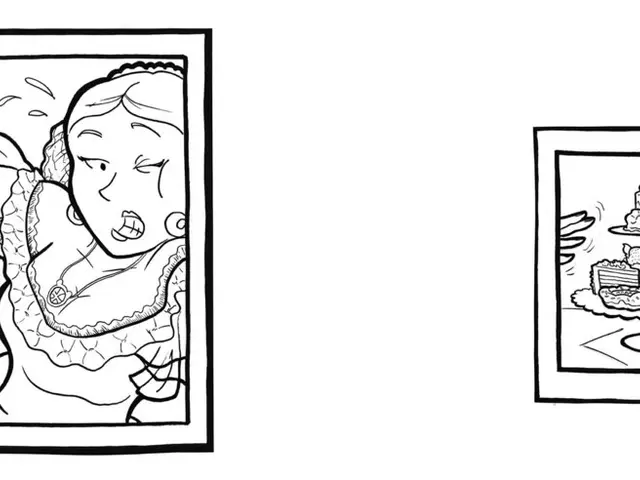Rapid and severe rosacea progression: Understanding origins, signs, and remedies
Rewritten Article:
Heads up! This ain't your typical skincare chat – we're diving into the nitty-gritty of rosacea fulminans, a rare and unforgiving skin condition that's known to hit hard and fast.
Rosacea fulminans, also known as pyoderma faciale, is characterized by intense, swollen, and painful blemishes that suddenly show up on the central part of your face, particularly the chin, cheeks, and nose. Unlike regular rosacea or acne, these symptoms are fancy-schmancy severe and pop up real quick.
Now, this bad boy primarily targets females in their childbearing years, but the reason behind it is as elusive as Bigfoot.
Treating this beast may require a cocktail of corticosteroids and Accutane, with a side of stress management and diet adjustments for good measure.
What sets rosacea fulminans apart?
The secret sauce of rosacea fulminans remains a mystery, but some researchers hint at connections with inflammatory bowel disease and pregnancy. It's also more likely to rob you of your peace if you've had rosacea before.
Your stress levels, hormonal shifts, and certain medications might trigger rosacea fulminans, but remember, every case is as unique as a snowflake.
According to recent studies, a few dietary factors could potentially aggravate rosacea symptoms. However, it's essential to note that this information isn't specific to rosacea fulminans.
Potential culprits include:
- Spicy foods that'd make a Habañero blush
- Alcohol, which might not go down as smoothly as you think
- Foods with cinnamaldehyde, like chocolate, tomatoes, and citrus fruits, which could add a kick you didn't ask for
- Histamine-rich foods and beverages, such as wine, aged cheese, processed meats, and hot drinks, that could heat things up a notch or two
The problem is, dietary triggers can vary wildly from person to person, so healthcare pros usually tailor their recommendations for each individual.
A visual tour of rosacea fulminans
Rosacea fulminans typically attacks the forehead, nose, cheeks, and chin. Symptoms might include:
- Sudden, intense skin color changes, like flushin' red
- Painful pustules, papules, and nodules that might merge into a single, unhappy mass
- Swelling and inflammation that makes your face look like a bloated balloon
- Flushing and blushing that'd make you blush
- Stinging and burning sensations that could make you wanna itch your face raw
In some cases, eyewitnesses have reported symptoms like dry, burning, or itchy eyes and light sensitivity. Systemic symptoms, such as fever and fatigue, are relatively rare.
Dealing with rosacea fulminans
Treatment for rosacea fulminans might involve a hefty dose of Accutane (oven-roasted acne medication, served prescription-only), as well as corticosteroids, either topical or oral.
In some cases, antibiotics combined with corticosteroids and lifestyle changes have shown improvements, as suggested by a 2016 case study.
Since certain factors can trigger rosacea, a healthcare pro might advise you to:
- Reduce your stress levels using tools like mindfulness meditation, deep breathing exercises, regular exercise, or journaling
- Make dietary changes, such as cutting back on alcohol
- Use gentle skin care products on your face
Pairing these strategies with medical treatments could help manage your symptoms more effectively, potentially improving your quality of life.
When to seek help
If you experience symptoms that go beyond regular rosacea or acne, like large tender nodules, abscesses, or significant facial discomfort, it's time to consult a dermatologist or another healthcare pro.
If your symptoms come on suddenly or persist despite over-the-counter medications or rosacea therapies, or if you notice eye irritation or inflammation, or experience systemic symptoms like fever, you should contact a healthcare pro pronto.
Early intervention can help control your symptoms, prevent complications, and improve your overall quality of life. Plus, it means you'll get personalized care tailored to your unique situation.
The lowdown
Rosacea fulminans is a rare and severe inflammatory skin condition that suddenly assaults your central face with symptoms like redness, intense blemishes, swelling, and inflammation. Treating this condition may require a mix of medications, stress management, and lifestyle adjustments.
If you suspect you have rosacea fulminans, don't hesitate to reach out to a healthcare pro. Early intervention can help manage your symptoms better and improve your quality of life.
- Rosacea fulminans, a severe and rapid skin condition, is often marked by intense, swollen, and painful blemishes on the central face, particularly the chin, cheeks, and nose.
- This condition, known as pyoderma faciale, primarily affects females in their childbearing years, despite the link with inflammatory bowel disease and pregnancy remaining elusive.
- In terms of treatment, a combination of corticosteroids, Accutane, stress management, and diet adjustments may be required to manage rosacea fulminans symptoms.
- Certain dietary factors, such as spicy foods, alcohol, foods with cinnamaldehyde, histamine-rich foods, and beverages, may potentially aggravate rosacea symptoms, although the influence on rosacea fulminans specifically is not clear.
- A healthcare professional may suggest reducing stress levels, making dietary changes, and using gentle skin care products to help manage rosacea symptoms in addition to medical treatments.
- If symptoms persist or are beyond regular rosacea or acne, such as large tender nodules, abscesses, or significant facial discomfort, it is essential to consult a dermatologist or another healthcare professional for early intervention and personalized care.








